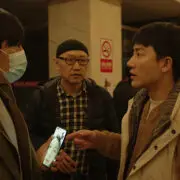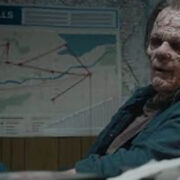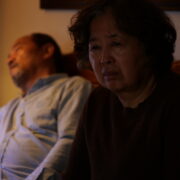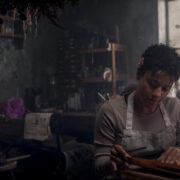A RADIANT GIRL: Coming Of Age At The End Of The World
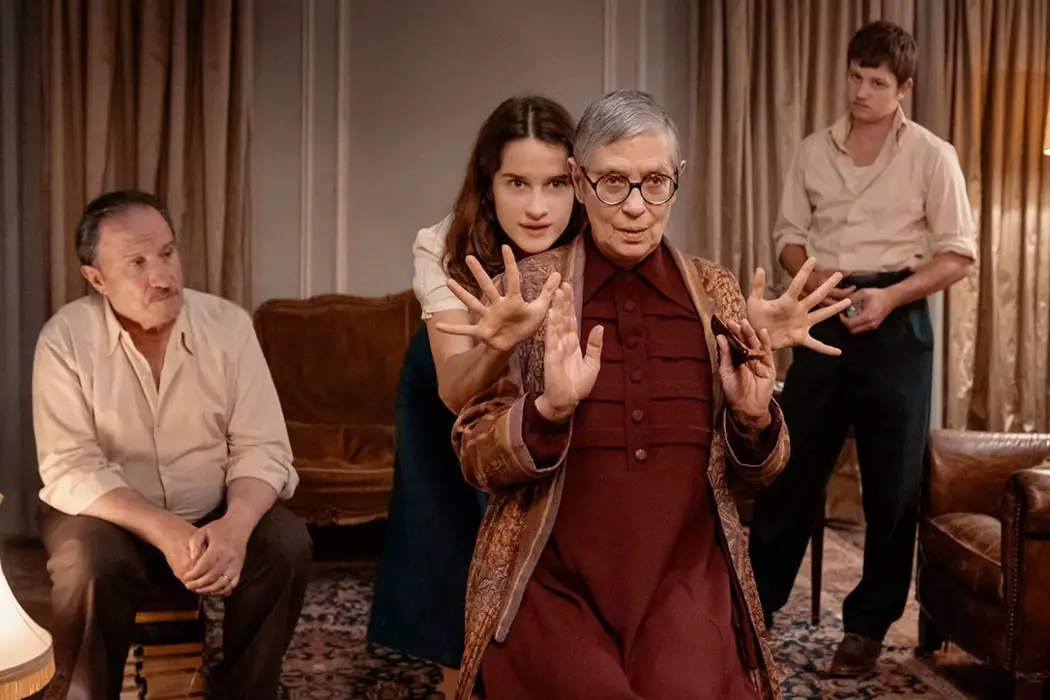
Lee Jutton has directed short films starring a killer toaster,…
Acclaimed actress Sandrine Kiberlain makes her feature directorial debut with A Radiant Girl, a coming-of-age tale chronicling the carefree life of a young Jewish woman in 1942 Paris whose dreams of becoming a great actress run up against the growing repression of Nazi-occupied France. A deeply personal film for Kiberlain, partly inspired by her own family history, it is a haunting depiction of everyday life under fascism and a timely reminder that the echoes of the past can still be heard today — and we would do well to listen.
A Day in the Life
Irène (the luminous Rebecca Marder) is nineteen years old and preparing to audition for an elite acting conservatory in Paris. She is preoccupied with memorizing her lines, convincing her best friend Viviane (India Hair) to be her scene partner, and trying not to break the heart of a male friend who has expressed feelings that Irène does not return. When she’s not rehearsing for her big audition, she works at a theater handing out programs and hangs out at home with her older brother, Igor (Anthony Bajon), her gruff father, André (André Marcon), and her spirited grandmother, Marceline (Françoise Widhoff), to whom Irène divulges all of her girlish secrets.
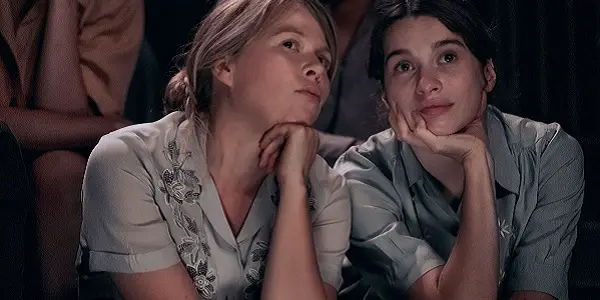
It all seems like the ordinary life of an ambitious, energetic young woman who is bursting with excitement for the impending future. But Irène is both French and Jewish, and no matter how hard she tries to pretend that everything is just fine, things are becoming more and more dangerous for her and her family under the Occupation. Even the flush of first love with Jacques (Cyril Metzger), a handsome young man who works in a doctor’s office, cannot keep the growing chill away.
Seemingly small changes to Irène’s everyday life start piling up, until soon they’ve formed a monstrous heap that can no longer be ignored: rumors of foreign Jews being arrested, identity papers requiring a stamp denoting Jewishness, phones and radios being confiscated from Jewish homes, yellow stars being sewn onto every jacket. Each loss of liberties serves as yet another cut, something that stings at first but can all too easily be forgotten as life goes on and the wounds seem to heal; eventually, it will be too much, and too late to stop the flow of blood. By the time Irène realizes what is happening, the future she was so excited to begin may be slipping out of her grasp.
Running Out of Time
A filmmaker of remarkable restraint, Kiberlain avoids filling her film with the usual period trappings that signify stories set during the Occupation; there are no bright red swastika armbands or flags to be seen in the Paris of A Radiant Girl, nor are there any graphic scenes of brutal violence and repression at the hands of the Nazis. Instead, the film remains focused on the point of view of Irène, who in the blissful narcissism of youth just cannot be bothered to pay much attention to what is going on around her even as the whispered worries of the adults in her life grow in volume and magnitude. Her father tries to play along, thinking that if they all just abide by the rules then no harm will come to them; her grandmother would rather rebel.

Yet amidst the growing darkness, there are still those moments of light that make life worth living — a kind neighbor named Josiane (Florence Viala) joining the family for Shabbat, Irène’s first kiss with Jacques — all captured vividly by cinematographer Guillaume Schiffman (The Artist). These moments of ordinary, everyday happiness keep A Radiant Girl from being too bogged down in impending doom, which means when it finally does arrive, it is all the more startling. Still, Kiberlain keeps her touch light and subtle, allowing Marder’s vivacious embodiment of the titular character to carry the film through both good times and bad.
An alum of France’s famous theater troupe La Comédie Française, Marder is vibrant and vivacious with a natural charm; it’s impossible not to fall in love with her Irène and to hope for her to survive and thrive against all odds. Many of the other characters in A Radiant Girl were written by Kiberlain specifically for the actors who portray them, including Marcon’s André, Viala’s Josiane, and Hair’s Viviane; all of them are wonderful.
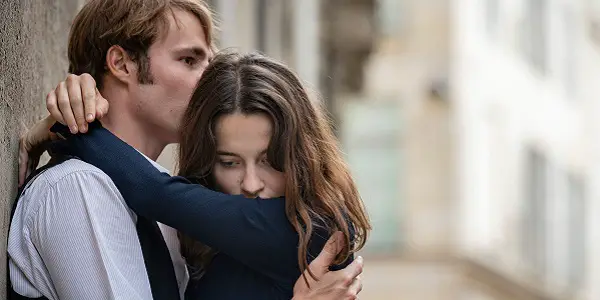
The lack of obvious historical signifiers combined with a somewhat anachronistic soundtrack (featuring songs by Tom Waits and Metronomy that suit the tone of the picture, if not the time period) means that A Radiant Girl — much like Christian Petzold’s brilliant adaptation of Anna Seghers’ classic WWII refugee tale Transit — almost feels as though it could take place anywhere, at any time, to anyone. Indeed, the film’s focus on the dangers of remaining complacent in the face of encroaching evil is a timeless one, and very much worth considering today. One cannot just do nothing in the face of repression and hope that the danger will fade away; one cannot abide by laws designed to criminalize a person’s very existence.
Conclusion
A Radiant Girl is a film where horrors hover on the edge of every frame, out of sight but never truly out of mind. That doesn’t take away from its moments of great beauty; rather, it accentuates them as something all the more valuable, for they may be fleeting.
A Radiant Girl opens at Quad Cinema in New York on February 17, 2023 before expanding nationwide.
Watch A Radiant Girl
Does content like this matter to you?
Become a Member and support film journalism. Unlock access to all of Film Inquiry`s great articles. Join a community of like-minded readers who are passionate about cinema - get access to our private members Network, give back to independent filmmakers, and more.
Lee Jutton has directed short films starring a killer toaster, a killer Christmas tree, and a not-killer leopard. Her writing has appeared in publications such as Film School Rejects, Bitch: A Feminist Response to Pop Culture, Bitch Flicks, TV Fanatic, and Just Press Play. When not watching, making, or writing about films, she can usually be found on Twitter obsessing over soccer, BTS, and her cat.



